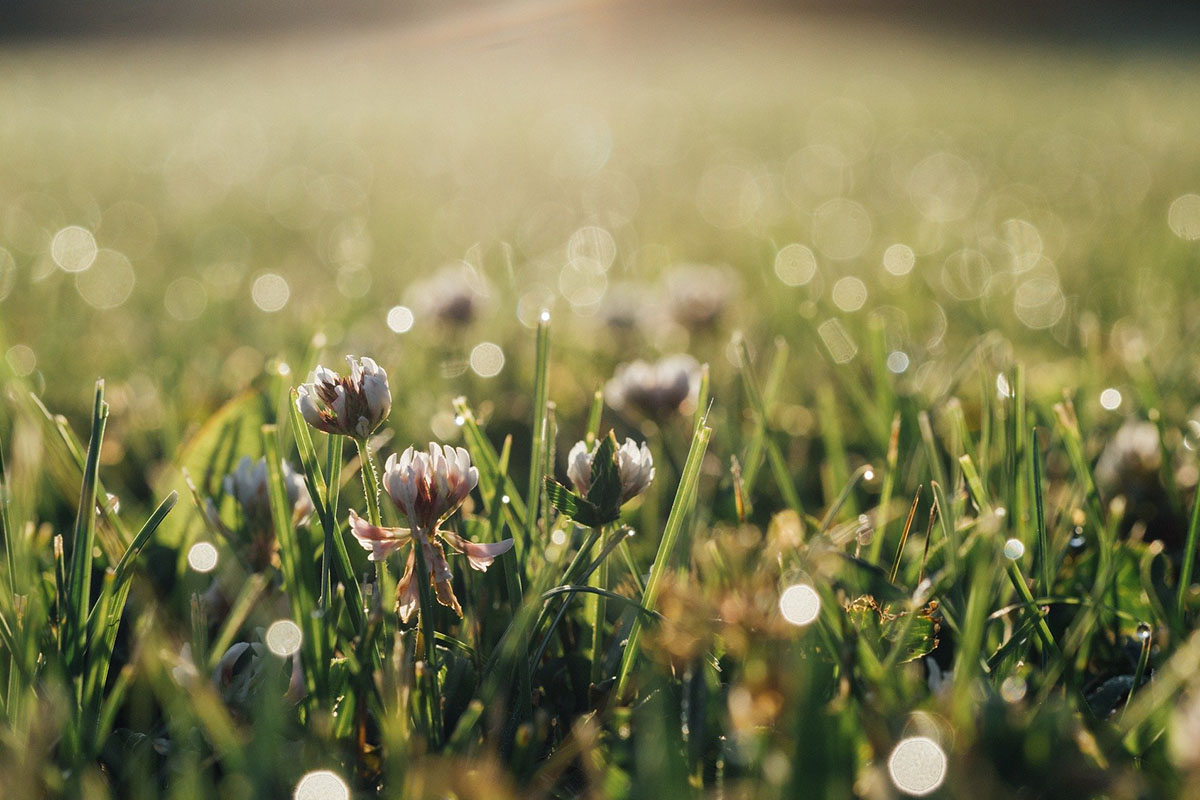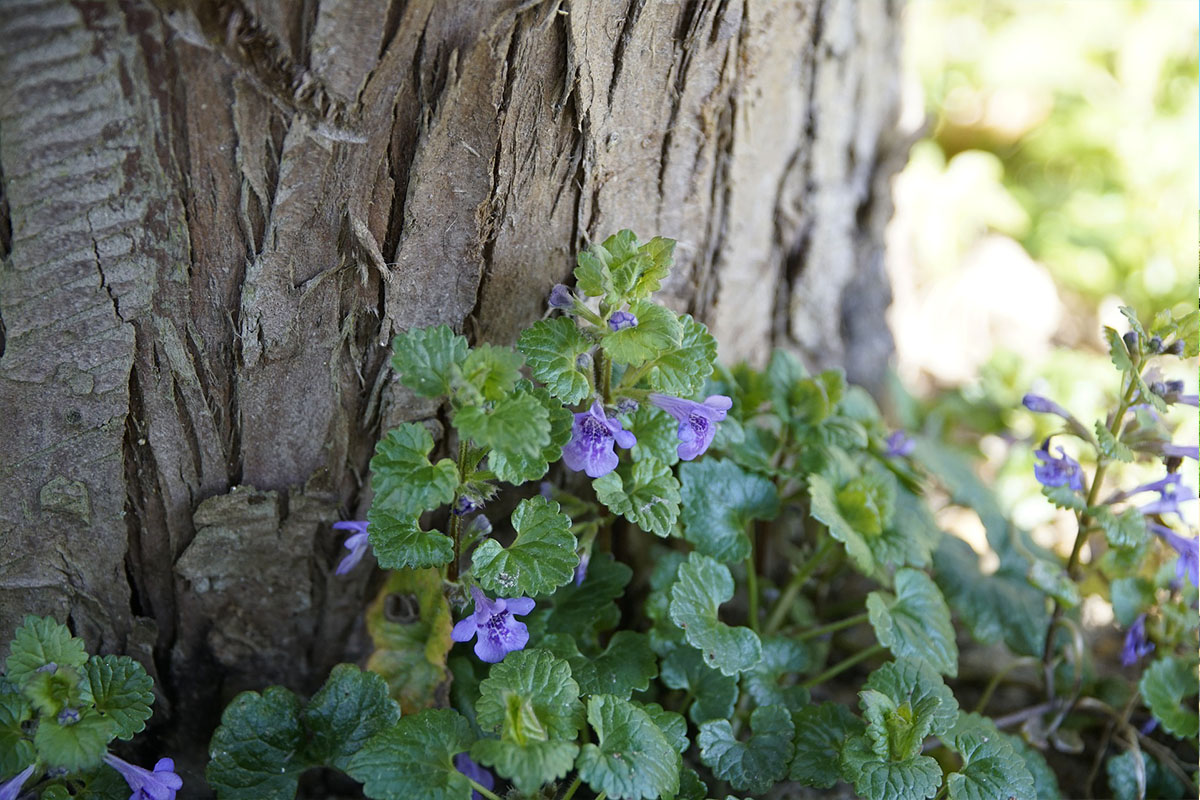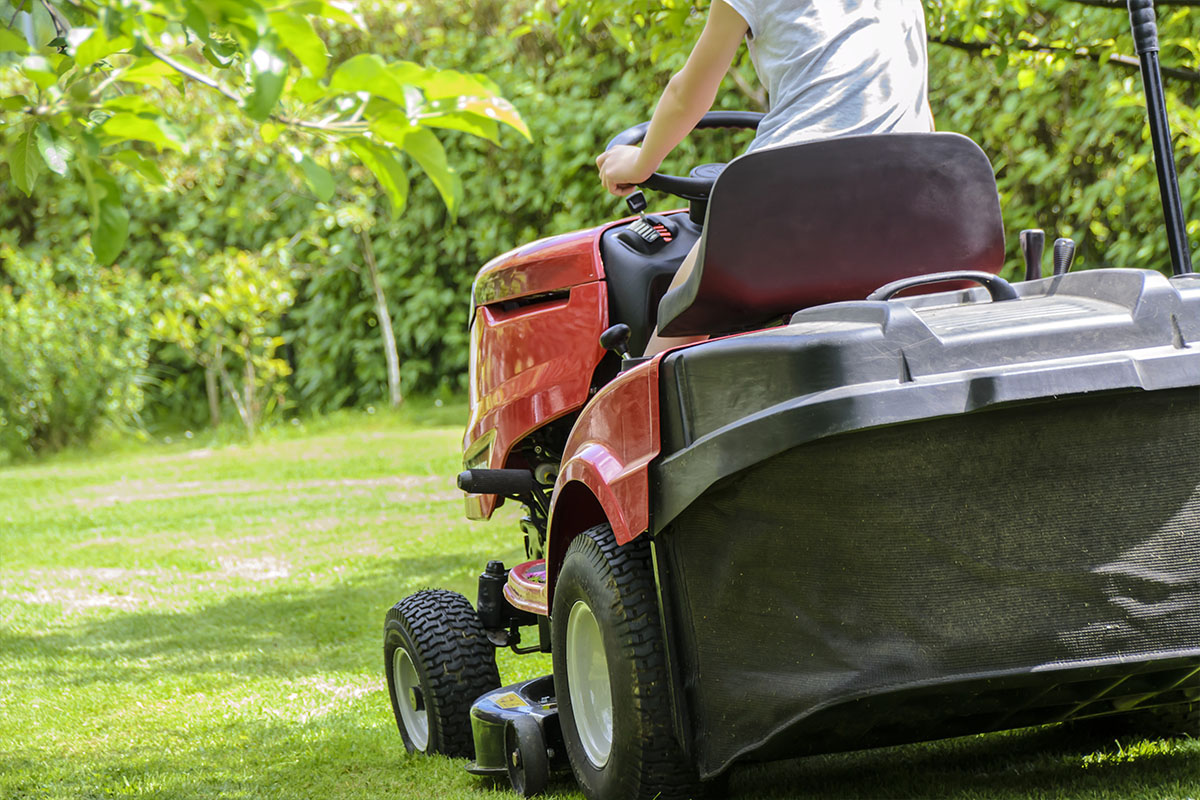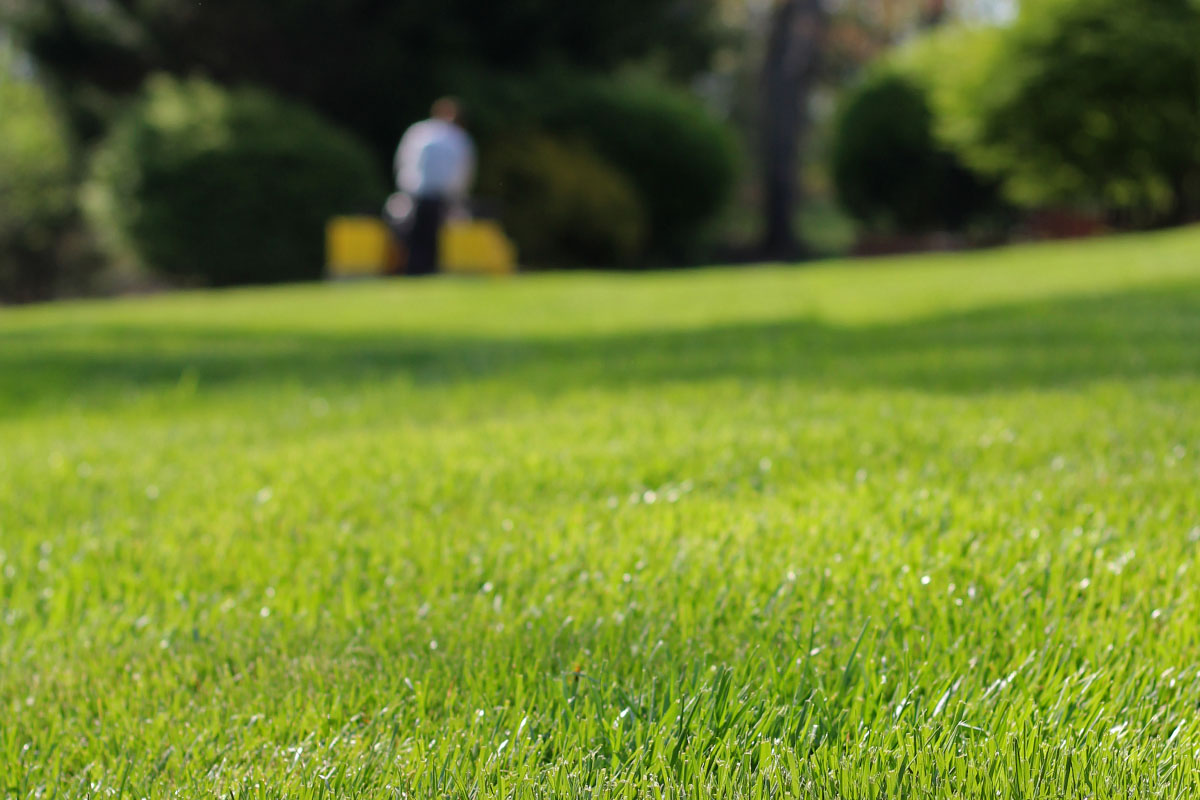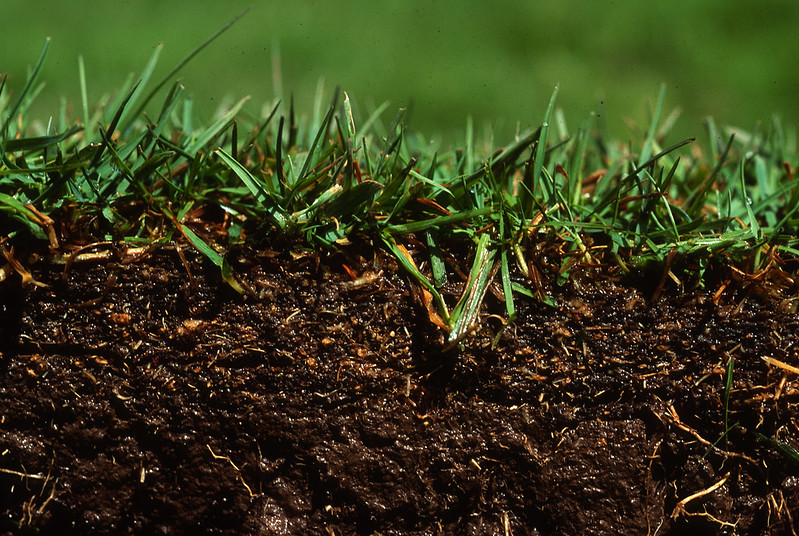As we transition from spring to summer here in the New River Valley, we’re enjoying some blooming bushes and flowers in the landscape. From rhododendron to irises, these are providing some nice pops of color. Unfortunately, we’re also still seeing steady growth of weeds at this time of year. We made it through dandelion season and now we’re seeing clovers overtake lawns and grassy patches throughout the area.
These pesky weeds detract from the curb appeal and fullness that we want our lawns to have. When thinking about weed control, you have to first know what kind of weed you have so that you know how to properly get rid of it.
At Green Care, we talk a lot about weeds here on our blog. Annual grassy weeds. Winter annual broadleaf weeds. Creeping perennial weeds. There are so many different types of weeds! As weed control experts, we don’t often think about some of these terms we toss around. However, we figured that some of these weed classifications may be confusing, and we wanted to break them down a bit for you.
How Weeds are Classified
Weeds are classified in several main ways:
- Life cycles (annuals, biennials, or perennials)
- How and when they develop/reproduce
- Structure and form (grassy or grass-like weeds or broadleaf weeds)
In this post, we’re going to tackle the life cycles. While most weeds fall into one of the three life cycle classifications (annuals, biennials, or perennials), some may be classified into more than one of these. The how and when they develop and reproduce are subsets of this life cycle classification.
Annual Weeds
Annual weeds complete their life cycle from seed to seed in a single year. This means they germinate, flower, set seed, and die within a twelve-month period. Annuals spread only by seed. Within this annual classification there are two further classifications:
Summer annual weeds
Summer annuals germinate in the spring once soil temperatures begin to warm up. They then flower in summer and produce seed in late summer or fall. They typically die once the first frost arrives.
According to UMass Extension Turf program, “Summer annual weeds are often difficult to manage, as many species are better suited to summer conditions than desirable cool-season turfgrass species.”
Examples of summer annuals in our area are crabgrass and hop clover (black medic).
Winter annual weeds
Winter annuals germinate in late summer or fall. They are dormant over the winter, then resume growth in the spring, flower and produce seed in mid to late spring. They generally die out in the heat of the summer.
Some examples of winter annuals that we see in the NRV are corn speedwell, henbit deadnettle, and common chickweed.
Biennial Weeds
Biennials complete their life cycle in two years. Like annual weeds, they only reproduce by seeds. In the first year, the seeds germinate in the spring or summer and produce root systems, but they do not flower. Instead, they grow what is called a rosette. This rosette of leaves has no central stalk and all the leaves in it arise from close to the soil surface. In the second year, biennials’ stems elongate and they flower, produce seed, and die.
Because they need undisturbed soil for at least two years, biennial weeds are typically a problem only in no‐till fields, pastures, and other areas undisturbed for at least that long. Very few turf weeds are biennial.
An example of a biennial weed that we see in the NRV would be musk thistles.
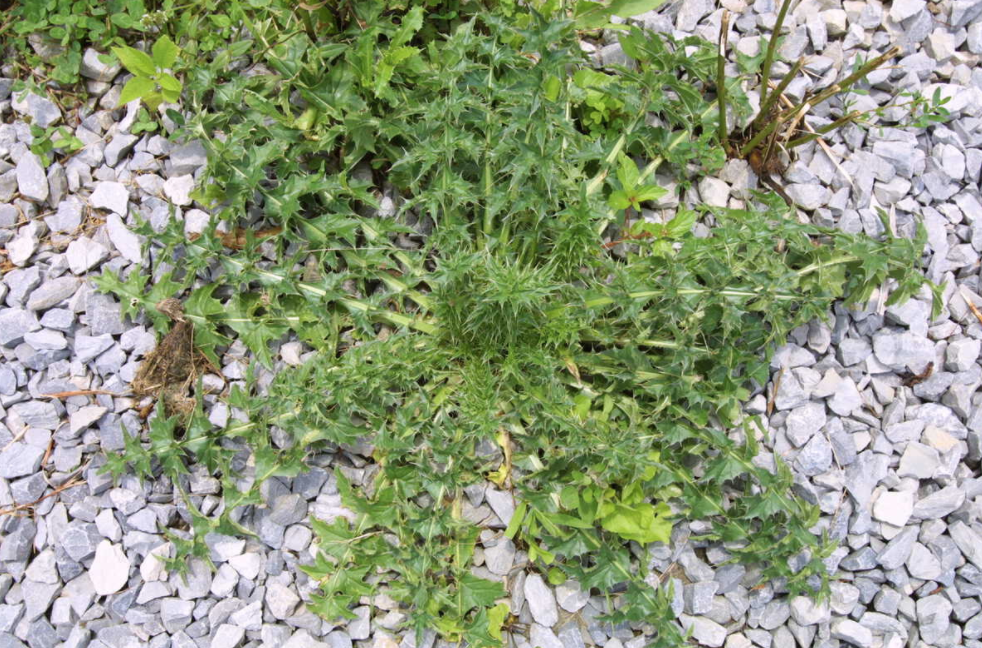
A musk thistle in its rosette form. Photo from VCE Weed Identification website.
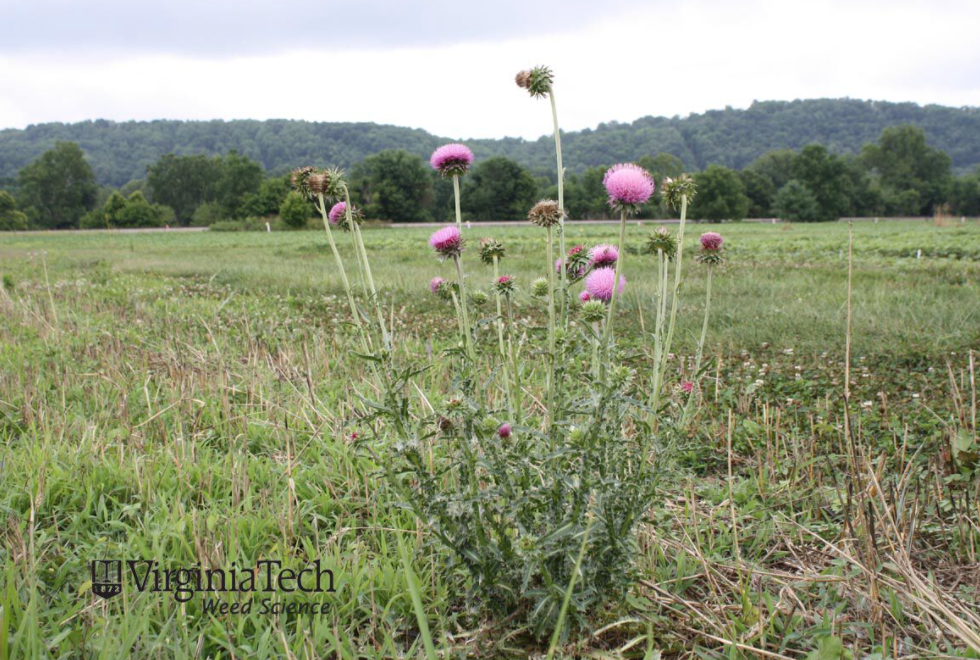
A musk thistle in its flowering form. Photo from VCE Weed Identification website.
Perennial Weeds
Perennial weeds live for multiple years and do not die after flowering. During the winter, all perennials use their underground plant parts to store food, which allows them to reemerge in the spring. There are two types of perennials:
Simple perennials
Simple (or solitary) perennials grow singly and spread only by seed. Each plant has its own separate root system even though you will often see several of these plants in close proximity to each other. Additionally, most simple perennials have taproots, which are large roots that grow vertically down through the soil. Some examples of simple perennials that are common in our area are dandelion and broadleaf plantain.
Creeping perennials
Creeping (or spreading) perennials can spread both by seed and vegetatively. Vegetative reproduction means that the plant sends out horizontal stems called rhizomes, stolons, or tubers. Rhizomes grow underground while stolons grow aboveground. Plants that spread vegetatively in this way can give rise to dozens of new plants. Because their root system is interconnected, spreading perennials can take over large areas of the lawn and landscape. Some spreading perennials that we see in the NRV include yellow nutsedge, ground ivy (creeping charlie), white clover, and Bermudagrass.
Understanding Weed Life Cycles: Why It’s Important
It’s important to understand the life cycle of a weed because that will help you determine the most effective control methods. The methods are different for each type of weed that we described above. These control methods include hand pulling, mowing, mulching, pre-emergent or post-emergent herbicides, or some combination of these methods. If you don’t use the correct method or do it at the wrong time of year, you could end up making matters worse for yourself!
Let Green Care Help
We hope this information is helpful in figuring out how to best tackle the weed problem in your lawn. However, if you feel overwhelmed by all this, we don’t blame you! We at Green Care are weed control specialists. Our programs are designed to prevent and treat weeds that arise in your lawn. Our fertilizing service also helps to improve turf density, because a thick lawn is your best defense against weeds.
So if you don’t already, let Green Care handle your weed control with a personalized program that is custom fit for your lawn. Get in touch with us today to get started!

